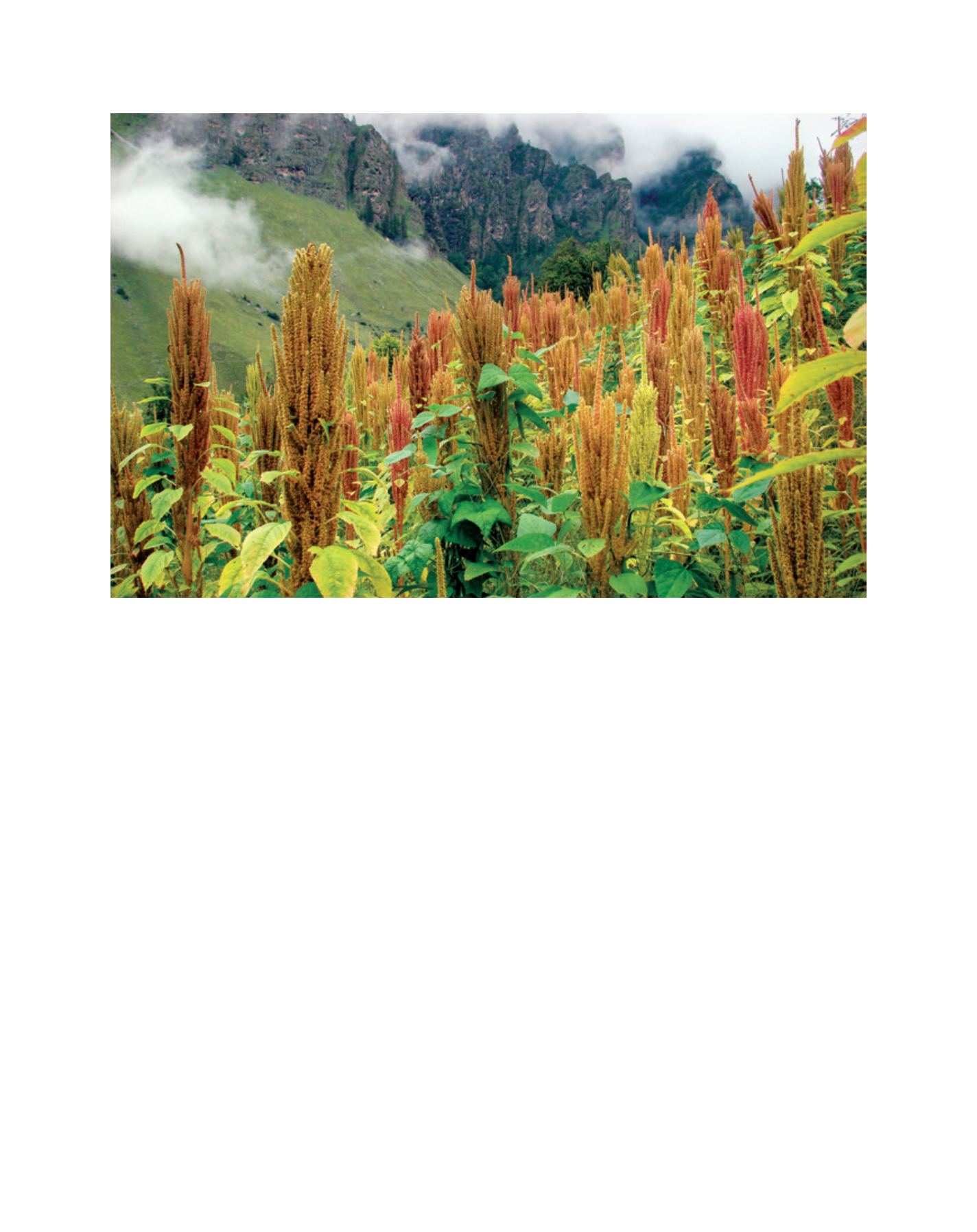

[
] 108
ity, climatic uncertainty and meeting basic needs. In the IHR the
traditional farming system has a focus on self-reliance, contrary
to modern agriculture which aims for economic gains. Farmers,
through trial and error, have evolved diverse agrotechnologies
related to land terraces, water management, irrigation, soil
conservation, manuring, weeding, crop rotation and lopping
regimes for agroforestry tree species. Many of them are ‘best
practices’ based on low input, and are therefore the best fit for
developing adaptation and mitigation strategies.
The major focus of policies in the Himalayan region seems
to be skewed towards big farms, as subsidies are provided
for raising orchards, floriculture, pisciculture, chemical ferti-
lizers, fencing of farms, irrigation and so on. This is hardly
feasible for smallholders who have small and fragmented
land holdings. There is a need for appropriate policies and
programmes to encourage farmers in the conservation of
agrobiodiversity, particularly in rain-fed areas. Also, appro-
priate institutional mechanisms and capacity to address the
issue of agrobiodiversity conservation need to be devised. The
wealth of indigenous knowledge of Himalayan communities
in managing agroecosystems and agrobiodiversity need to
be understood by the outside world to get adequate policy
backing. There is a need to improvise from subsistence to a
market economy, and there is no harm in that if it is seen as
a natural change for farming communities. However, farmers
have little information on market linkage, technologies and
the latest policies, so appropriate capacity development should
regulate this change. The cash crop economy is successful in
areas where effective value chains exist. Although at small
scale, rural markets (village markets), locally called ‘hats’,
have good potential for providing income to smallholders.
The Govind Ballabh Pant Institute of Himalayan Environment
and Development, keeping in view the issue of smallholder
farming systems and farm families in the IHR, has been
vigorously pursuing research, documentation of traditional
knowledge, demonstration of environment-friendly natural
resource management models among smallholder farming
communities, documentation and promotion of pollinator
friendly best practices, training and capacity building of farm
families, and policy advocacy in order to achieve food security
and sustainable management of agroecosystems in the IHR.
It would be logical to improvise on traditional technologies
that have ecological efficiency, economic viability, social accept-
ability and environmental suitability rather than replacing them
with modern tools and techniques. As policies and programmes
often regulate change among communities, appropriate policy
design is required to make sure farming programmes are people
programmes. Policies should encourage the internalization of
development interventions and must focus on empowering
farmers. Therefore, the role of people should be more active in
policy formulation, based on the transfer of appropriate knowl-
edge and technologies, and the amalgamation of new knowledge
with traditional knowledge. If appropriately planned, family
farming can provide and contribute significantly to the food
security, increased livelihoods, social protection and well-being
of Himalayan farming communities.
A view of mix-cropping in rain-fed conditions in a high altitude area of north-west Himalaya
Image: G.B. Pant Institute
D
eep
R
oots
















